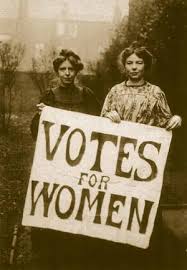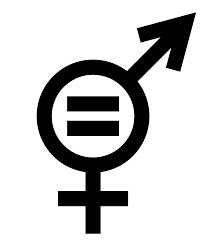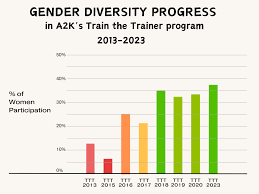In this post, notes of Unit 4 (Gender Perspectives on Public Administration: a. Gender and Governance, b. Gender sensitivity and participation in administration) from DSC– 4 (Perspectives on Public Administration) are given which is helpful for the students doing graduation this year.
Gender and Governance
Concept of Gender in Governance
Definition of Gender in Governance

Gender in governance means including both men and women’s views in government processes and policies. It focuses on making sure everyone has the same chance to participate and have access to power and resources. The aim is to remove biases and inequalities related to gender in decision-making and to create fair policies that meet the needs of all genders.
Why gender is important in Governance
Including gender in governance is important because it helps make democracy stronger, improves how public services work, and supports social fairness. When both men’s and women’s perspectives are included, policies can better meet the needs of the whole population. Here are some reasons why this is important:
- Inclusive Decision-Making: Having both genders in governance leads to better decisions that reflect the views of everyone, including those who are often left out.
- Fair Distribution of Resources: Gender-aware governance tries to share resources and opportunities fairly. Without this, policies may benefit mostly men, increasing gender inequalities.
- Advancing Gender Equality: Considering gender helps fix imbalances and promotes equality by changing biased policies and services.
- Better Policy Results: Policies that consider gender are more effective in meeting people’s real needs, improving areas like health care, education, and safety.
- Accountability and Clarity: Gender-aware governance encourages responsibility by requiring transparency about how policies affect different genders and ensuring commitments to gender equality are met.
Historical Evolution of Gender in governance
The inclusion of gender in governance has changed throughout history, influenced by the women’s movement and democratic systems. Here’s a brief look at this evolution:

- Early Feminist Movements (Late 19th Century – Early 20th Century):
Early feminists fought for women’s voting rights and better access to education and jobs. At this time, men mostly held power, and there was little focus on gender issues in governance. Movements in countries like the UK and the US started to allow women to enter politics, though their roles were still limited.
- Post-World War II (1940s–1960s):
After World War II, many countries recognized women’s contributions during the war. This led to a greater focus on women’s rights, and gender issues began to be included in the global human rights agenda. Organizations like the United Nations began to support women’s rights, although the term “gender” was not commonly used yet.
- Second-Wave Feminism (1960s–1980s):
The second wave of feminism called for more changes in society, including equal rights in work, family, and politics. Feminists highlighted the lack of women in political roles. In 1979, the UN adopted a key treaty (CEDAW) that acknowledged the importance of gender equality in governance.
- Gender Mainstreaming (1990s):
In the 1990s, gender mainstreaming became a key idea in global governance. This means making sure gender perspectives are included in all policies and programs. Countries started creating gender policies, budgeting with gender in mind, and placing women in leadership roles.
- 21st Century – Modern Governance:
In the 21st century, the importance of gender in governance is widely accepted. Many countries have set quotas to increase women’s political participation, and global organizations continue to promote gender-sensitive policies in various areas. Gender-responsive governance is now supported by initiatives like the Sustainable Development Goals (SDGs), especially Goal 5: Gender Equality. There’s also a growing recognition of how gender interacts with other identities, such as race and class.
In short, the idea of gender in governance has grown from simply wanting women’s rights to a broader approach that includes gender in all aspects of governance. Gender-sensitive governance is now seen as essential for real democracy, equality, and effective public policies.

Gender Equality in Governance
Governments and global organizations see the importance of gender equality in governance. They have created various rules and plans to help everyone, regardless of gender, take part in governance. These rules aim to make sure that gender issues are considered in public administration, laws, and decision-making.
Important Policies and Frameworks for Gender Equality
- CEDAW (1979)
– CEDAW is an international agreement that aims to end discrimination against women in all areas, including governance.
– It requires governments to provide equal opportunities for women in public roles.
– It suggests using temporary measures, like gender quotas, to help achieve equality.
- Beijing Declaration (1995)
– This platform was created at the UN Fourth World Conference on Women and is a global promise to achieve gender equality.
– It asks governments to ensure women participate equally in decision-making, aiming for at least 30% women in political and administrative roles.
– It supports gender mainstreaming to make sure gender issues are included in all policies.
- Gender Mainstreaming (1997)
– This strategy, adopted by the United Nations, aims to include gender issues in all areas of governance and policymaking.
– The goal is to make gender considerations part of all policies and programs, not just separate topics.
- Sustainable Development Goals (SDGs) (2015)
– Goal 5 focuses on achieving gender equality and empowering women and girls.
– It encourages governments to create policies that support women’s full participation in leadership roles.
- National Gender Policies
– Many countries have created specific policies to promote gender equality in governance, which may include affirmative actions and initiatives to empower women.
– For example, Rwanda has a successful National Gender Policy that supports high levels of women’s political participation.
- Gender Quotas
– Gender quotas help ensure that women have a minimum level of representation in elected positions and public administration.
– Different types of quotas exist, such as reserved seats, party quotas, and legislative quotas.
– Over 100 countries use some form of gender quotas to support gender equality in politics.
- Gender-Responsive Budgeting
– This approach looks at public budgets to make sure they meet the needs of all genders.
– It encourages allocating resources to programs that promote gender equality.
Case Studies and Examples for Gender Equality
- Rwanda: A Leader in Women’s Political Participation
– After the 1994 genocide, Rwanda worked to empower women, creating gender-sensitive policies and a quota system.
– The constitution requires at least 30% of parliamentary seats to be held by women, leading to a majority female parliament by 2020, with women holding 61% of seats.
– This has resulted in laws addressing issues like healthcare and domestic violence.
- Sweden: Gender-Equal Public Administration
– Sweden has strong gender equality policies that are evident in its governance, with women holding about 50% of parliamentary seats.
– Gender mainstreaming is a key policy, ensuring gender issues are included in all government actions.
– Family-friendly policies, such as parental leave for both parents, help promote equality.
- India: Women’s Representation in Local Governance
– In 1992, India set up a quota system for women in local governance, reserving 33% of seats in village councils for women.
– This has significantly increased women’s involvement in local leadership, allowing them to address issues like water access and education.
- Norway: Gender Quotas in Business
– Norway introduced a law in 2003 requiring at least 40% of board members in public companies to be women.
– This has led to increased female representation in corporate leadership and has influenced other countries to adopt similar rules.
- Latin America: Gender Parity in Politics
– Countries like Bolivia and Mexico have laws for equal representation of men and women in elected offices.
– Bolivia’s law requires that 50% of candidates be women, resulting in nearly 54% of its lower house being women as of 2021.
– This has led to more gender-sensitive policies in various social areas.
Conclusion
Gender equality in governance is vital for creating fair and inclusive decision-making. Many policies have been made to address gender imbalances and encourage participation from all genders. Successful examples from countries like Rwanda, Sweden, and India show that gender equality in governance can lead to better and fairer policies.
Challenges to Gender Equality in Governance
Even though there has been progress in achieving gender equality in governance, many challenges still prevent women and marginalized genders from fully participating in decision-making. These challenges happen in society and institutions, often working together.
Major Social Barriers in gender equality
- Traditional Gender Roles
– Many societies believe that leadership is mainly for men. Women are often seen as less capable for these roles, and their main responsibilities are usually caregiving and household tasks. This limits their time and opportunities to get involved in governance.
– Social pressures can also make women hesitant to seek leadership roles, as they may face criticism for stepping outside traditional roles.
- Few Roles Models
– In male-led governance, there are often not enough visible female role models, which makes it hard for young women to see themselves in leadership positions.
– Having role models is important for encouraging and mentoring future women leaders, but many countries lack this support due to low representation of women in politics.
- Education and Upbringing
– From a young age, boys and girls are often guided toward different paths, with boys encouraged to take on leadership and girls directed toward nurturing roles.
– In some cultures, girls have limited access to education, making it harder for them to participate in governance.
- Violence and Harassment
– Gender-based violence and harassment stop many women from engaging in governance. Women in politics often face threats and intimidation, which can push them away from public life.
– Online abuse is also used to silence women in leadership roles.
- Cultural Attitudes Towards Leadership
– Cultural and religious beliefs can dictate what is acceptable for men and women, sometimes discouraging women from speaking publicly or holding authority.
– In traditional communities, women in leadership may be doubted or looked at with suspicion.
- Balancing Responsibilities
– Women often juggle household duties with work, making it hard to find time for governance. Even those in leadership roles are expected to manage home responsibilities.
– Many places lack family-friendly policies, such as maternity leave or childcare support, which makes it harder for women to participate in public life.
Institutional Barriers in gender equality
- Male-Dominated Politics
– Many governance systems are led by men, creating an environment that can exclude women. Political parties may be slow to promote women to leadership roles.
– Informal networks, like “old boys’ clubs,” often keep women out, making it hard for them to get influential positions.
- Ignoring Gender Differences
– Many policies are created without considering how they affect men and women differently, which can reinforce existing inequalities.
– For instance, election processes requiring a lot of money can disadvantage women who have less access to funding.
- No Gender Quotas
– Without gender quotas or affirmative action, women struggle to enter political or administrative roles. While some countries have quotas, their enforcement is often weak.
- Lack of Commitment
– Even when there are policies for gender equality, they may not be properly enforced due to a lack of commitment from those in power. Resources may not be allocated to support these policies.
- Unsupportive Work Environments
– Many institutions do not address the needs of women, such as holding meetings at inconvenient times or not tackling issues like harassment. This discourages women from joining governance roles.
- Financial Challenges
– Women, especially from marginalized backgrounds, often find it hard to access the money needed to run for office or take on leadership roles. High campaign costs and limited access to funding make it tough to compete with men.
- Lack of Data
– A lack of detailed data on gender issues makes it hard to see how policies affect gender equality. Without proper data, creating effective policies or measuring progress is challenging.
Conclusion
To achieve gender equality in governance, we must tackle social and institutional challenges. Traditional views about gender roles, violence, and leadership expectations limit women’s participation, while political structures often favor men. To change this, governance systems need to adopt gender-sensitive policies, enforce quotas, and encourage cultural shifts that support gender equality. Addressing these issues will lead to more inclusive governance and fairer distribution of power and resources.
Simple Ways to Improve Gender Equality in Governance
Getting gender equality in governance means more than just changing rules or setting goals; it means changing the way politics and administration work so that everyone, regardless of gender, can take part in making decisions. Here are some simple ways to make things better and to remove barriers for everyone.
| Ideas for Change | Details |
|---|---|
| Gender Quotas and Support for Women |
|
| Include Gender in All Policies |
|
| Budgeting for Gender Equality |
|
| Stop Violence Against Women in Politics |
|
| Raise Public Awareness and Media Representation |
|
Examples of Gender Equality
- Rwanda: A Model for Gender Equality
After a tragic past, Rwanda set a 30% gender quota for women in decision-making. Now, over 60% of Rwanda’s parliament is made up of women, the highest in the world.
Key Point: Rwanda’s success came from making gender equality a priority in laws and social programs, showing that strong support can lead to real change.
- Sweden: Family-Friendly Policies
Sweden offers generous parental leave for both mothers and fathers, helping to challenge the idea that caregiving is only a woman’s job.
Key Point: Sweden makes sure to check every public policy for its impact on gender since 1994, leading to a more equal society.
- India: Local Governance for Women
India has introduced rules that reserve 33% of seats in local government for women. This allows many women to take part in community decisions.
Key Point: This system has empowered women to address important local issues, leading to positive changes in their communities.
- Norway: Gender Quotas in Business
Norway requires that at least 40% of board members in public companies be women. This has changed the gender balance in both politics and business.
Key Point: Norway shows how quotas can help make governance more inclusive at all levels.
- Bolivia: Equal Representation in Politics
Bolivia has a 50/50 gender parity law, ensuring equal representation of men and women in politics.
Key Point: This success shows that legal support and strong community movements can lead to greater gender equality.
Conclusion
Achieving gender equality in governance takes strong policies and a shift in culture. By using strategies like gender quotas and gender-responsive budgeting, and learning from successful countries, governments can create inclusive spaces for everyone. This leads to better decision-making that benefits all of society, where every voice is heard.
Gender Sensitivity and Participation in Administration
Understanding Gender Sensitivity
Gender sensitivity means being aware of and understanding the different experiences and needs of men, women, and non-binary people. It focuses on how gender roles and expectations can affect people’s lives, especially in areas like government, education, health, and jobs. Gender sensitivity works to challenge unfair beliefs and behaviors about gender and aims for equality.
Definition of Gender Sensitivity
– Gender Sensitivity: Recognizing and addressing the needs of different genders to promote fairness and inclusion.
– It involves making an effort to understand and respect differences without being biased or discriminatory.
– Gender sensitivity recognizes that women and non-binary individuals have faced unfair treatment and aims to create equal chances for everyone.
Importance of Gender Sensitivity
| Key Areas | Details |
|---|---|
| Promotes Equality and Inclusion |
|
| Better Policies and Governance |
|
| Reduces Gender-Based Violence |
|
| Improves Social and Economic Outcomes |
|
| Makes Organizations More Effective |
|
| Challenges Old Gender Norms |
|
Gender Sensitivity Training
Gender sensitivity training is important for creating environments that respect all genders in areas like government, education, healthcare, and businesses. This training helps people understand gender inequalities and promotes positive attitudes and behaviors.
Goals of Gender Sensitivity Training:
– Raise Awareness: Teach about existing gender biases and inequalities.
– Change Attitudes: Encourage people to change negative beliefs and promote equality.
– Create Inclusive Spaces: Foster environments where everyone feels safe and empowered.
– Promote Fair Decision-Making: Ensure all genders are included in important choices.
Key Parts of Gender Sensitivity Training:
- Understanding Gender Concepts:
– Introduce basic ideas about gender, including the difference between sex (biological) and gender (social roles).
– Discuss terms like gender identity and gender discrimination to show how society shapes expectations.
- Addressing Gender Stereotypes:
– Discuss common gender stereotypes and their effects on people’s experiences.
– Challenge beliefs, like the idea that women are naturally nurturing or men are natural leaders.
- Recognizing Gender Inequality:
– Teach about different kinds of gender inequality, such as pay gaps and lack of access to education or political power.
– Highlight the importance of recognizing and addressing these inequalities.
- Developing Respectful Communication:
– Teach how to communicate in ways that are respectful and inclusive, using fair language and being aware of body language.
- Creating Fair Policies:
– Guide participants in making gender-sensitive policies that meet everyone’s needs, like those related to harassment or hiring.
- Gender Sensitivity in Leadership:
– Focus on how leaders can promote gender equality by being inclusive in decision-making and appointing diverse teams.
- Preventing Gender-Based Violence:
– Train participants to recognize and address signs of violence and support victims.
- Understanding Intersectionality:
– Discuss how gender interacts with other identities like race and class, leading to different forms of inequality.
Best Practices for Effective Training:
- Tailored Programs:
– Customize training to fit the specific needs of participants, whether they are in government, business, or education.
- Interactive Learning:
– Use activities like role-playing and discussions to engage participants in the training.
- Ongoing Training and Evaluation:
– Provide continuous education and check-in regularly to see how the training is working.
- Commitment from Leadership:
– Leaders should support gender sensitivity training and model respectful behavior to set a positive example.
Conclusion
Understanding gender sensitivity is key to building fair and inclusive societies. It means recognizing how gender roles affect people differently and actively working to fix these issues. Training in gender sensitivity helps individuals and organizations challenge stereotypes, create inclusive spaces, and develop fair policies for everyone. When done well, it can lead to better governance, healthier workplaces, and less violence and discrimination based on gender.
Gender Mainstreaming in Public Administration

Gender mainstreaming is a way to include gender issues in all public policies and decision-making. The goal is to reduce gender inequalities by making gender a key part of how government operates.
Strategies and Approaches to include gender in public administration
To effectively include gender in public administration, several strategies are commonly used:
- Gender Analysis in Policy Development:
– This means looking at how policies affect men, women, and non-binary individuals differently.
– Public institutions should check policies for gender concerns before they are created.
– For example, when creating a transportation policy, gender analysis might look at women’s safety and access needs.
- Gender-Responsive Budgeting (GRB):
– GRB makes sure that government budgets address gender inequalities.
– This involves funding programs that help women and marginalized genders and checking how budgets affect gender issues.
– For instance, more money can be allocated for maternal health programs.
- Gender Focal Points in Government Ministries:
– Each government department should have a gender focal point to ensure gender issues are included in all areas.
– These points help plan, implement, and evaluate policies with gender in mind and promote gender equality in their ministries.
- Training and Capacity Building:
– Training public officials on gender issues is important for better policymaking.
– Training should include gender analysis and inclusive communication to help government workers incorporate gender perspectives in their jobs.
- Legislative and Policy Reforms:
– Governments should create laws that require gender mainstreaming in public administration.
– Examples include laws for equal pay and anti-discrimination.
- Institutionalizing Gender Equality in Governance Structures:
– Governments should set up offices or councils dedicated to gender equality.
– These bodies would oversee gender-sensitive policies and ensure that gender equality is prioritized.
- Monitoring and Evaluation Mechanisms:
– Governments should have systems to check how well gender mainstreaming is working.
– This includes collecting gender-specific data to see if policies are effective.
- Inclusive Public Participation:
– Public administration must ensure that women and marginalized genders are included in decision-making.
– This can be done through consultative bodies that include gender experts and advocates.
Implementation Challenges to Gender Mainstreaming
While gender mainstreaming is important, it faces several challenges:
- Resistance to Change:
– Some policymakers may not prioritize gender equality or may resist changes.
– Traditional views on gender roles can also make it hard to accept gender-sensitive policies.
- Lack of Capacity and Resources:
– Governments often lack the resources to train staff or fund gender-sensitive programs, leading to weak efforts.
- Inadequate Data Collection:
– There is often not enough gender-specific data to assess the impact of policies, making it hard to identify issues.
- Overlapping and Conflicting Policies:
– Different government departments may have conflicting goals related to gender, leading to confusion.
- Cultural and Societal Barriers:
– Traditional beliefs about gender roles can limit women’s participation and create additional obstacles to equality.
- Insufficient Monitoring and Accountability Mechanisms:
– Without strong monitoring systems, it is difficult to hold officials accountable for gender mainstreaming.
- Lack of Political Will:
– Success depends on government leaders prioritizing gender equality. Sometimes, other issues take precedence.
- Invisibility of Non-Binary and LGBTQ+ Perspectives:
– Many strategies focus mainly on women, leaving out non-binary and LGBTQ+ individuals.
Conclusion
Gender mainstreaming in public administration is a key way to promote gender equality. By including gender issues in policies and decision-making, governments can create fairer systems. However, challenges like resistance to change and lack of resources must be overcome. With strong commitment and effective training, governments can make gender equality a priority in public administration.
Women’s Involvement in Administration

Women have become more involved in administration and government over time, but there are still problems with gender inequality. Past biases and barriers have made it hard for women to reach leadership roles, even though there is some progress towards equal representation in many areas. This section looks at the history of women’s roles in administration and current trends.
Historical Background of Women’s involvement in Administration
In the past, women had very limited roles in public administration due to male-dominated structures. For many years, women were mostly expected to stay at home and had little say in politics or leadership.
- Before the 20th Century:
– Before the 1900s, most government roles were held by men. Women were often kept out of politics due to laws and customs that limited their involvement.
– Leadership positions were only for men, and women had few rights regarding education, owning property, and making decisions.
- Early 20th Century:
– The early 1900s saw the start of women’s entry into public administration, thanks to feminist movements pushing for women’s rights and voting.
– During World Wars, women took on more administrative roles while men fought, leading to a recognition of their abilities in public service.
– The suffrage movement helped women gain the right to vote in several countries, such as New Zealand in 1893, the U.S. in 1920, and the U.K. in 1918 for some women.
- After World War II:

– After WWII, there was more acknowledgment of women’s contributions to governance. Many new countries adopted laws supporting gender equality in government, but challenges remained.
– International groups like the United Nations began promoting gender equality through agreements like the Universal Declaration of Human Rights in 1948.
– The feminist movements of the 1960s and 1970s pushed for more women’s rights, including in governance, leading to more women in public offices, though often in lower positions.
- Late 20th Century:
– The Beijing Declaration in 1995 was an important step toward increasing women’s roles in decision-making. Many countries started using gender quotas to encourage women’s involvement in leadership.
– More women began taking senior roles in governance, but the change was slow, and many countries still lacked equal leadership.
Current Trends and Statistics for women’s involvement in Administration
Women’s involvement in administration has grown around the world, but there are still big gaps in their representation and influence.
- Global Increase in Women’s Representation:
– As of 2023, more women are in ministerial positions and parliaments than ever before.
– According to the UN Women’s Global Gender Gap Report 2023, women hold about 22.9% of ministerial roles and around 26% of parliamentary seats globally.
– Some countries, like Rwanda and New Zealand, have seen significant increases in women’s political participation due to gender quotas.
- Women in Senior Leadership Roles:
– Despite more women in administration, they are still underrepresented in top leadership roles.
– Only about 11% of global executive positions are held by women as of 2023.
– Many women in public administration hold lower-level positions, while men dominate high-ranking roles.
- Regional Differences:
– Women’s participation varies greatly by region.
– Nordic countries, like Sweden and Finland, have high rates of women’s participation in governance.
– Rwanda leads the world, with 61% of its parliamentary seats held by women.
– In Asia and the Middle East, cultural norms often limit women’s access to public office, though some countries have made progress.
– Latin America has seen improvements with gender parity laws in countries like Costa Rica and Argentina.
- Gender Quotas:
– Gender quotas have been effective in increasing women’s representation in public administration by requiring a minimum percentage of women in these roles.
– Many countries have adopted electoral quotas, but success depends on proper enforcement. Sometimes, women may be included but not truly have decision-making power.
- Challenges for Women’s Participation:
– Women still face several challenges in public administration:
– Gender Stereotypes: Women leaders often deal with biases that question their abilities, limiting their career growth.
– Work-Life Balance: Many women struggle to balance work and family responsibilities, especially in societies where they are expected to manage household tasks.
– Discrimination and Harassment: Women often face discrimination and harassment, which can create unwelcoming workplaces.
– Lack of Support Networks: Women in senior roles may not have access to mentorship or networks that can help them succeed.
- Efforts to Promote Women’s Participation:
– Organizations like the United Nations and the World Bank are working to increase women’s roles in governance.
– Many governments have introduced policies to support gender equality in public administration.
– Women’s advocacy groups play an important role in pushing for greater representation in administration.
Conclusion
Women’s involvement in administration has improved over the past century, with more women in public office than ever. However, significant challenges remain, such as gender stereotypes and unequal representation in leadership roles. While initiatives like gender quotas have helped, more work is needed to achieve equal representation in public administration worldwide. Ensuring women can fully participate in governance is important for creating fair and effective policies for everyone.
Impact of Gender Diversity on Public Administration

Having both men and women in government is important for good management and public services. Studies show that when more women and people from different genders are included in decision-making, it leads to better results, such as more creativity and better services.
Benefits of Gender Diversity in Administration
- Better Decision-Making:
– Different viewpoints lead to better choices. Women and people from various gender backgrounds bring different experiences that help create better policies.
– Research shows that teams with both genders make smarter decisions that meet the needs of more people.
– Companies with more gender diversity tend to do better overall.
- More Innovation and Creativity:
– Different genders can lead to new ideas and solutions to problems.
– Gender-diverse teams in government can create better policies that serve everyone, especially in areas often ignored, like women’s health and education.
- Higher Accountability and Transparency:
– When women are in decision-making roles, there is often more focus on honesty and trust.
– Studies show that countries with more women in government tend to have less corruption.
– Places like Rwanda and New Zealand, with many women leaders, focus on fighting corruption and being open.
- Improved Public Services:
– Gender diversity helps create services that meet the needs of different groups, like women and children.
– Policies addressing specific needs, such as health services and child care, are more likely to happen when women are part of the decision-making process.
– In Scandinavian countries, gender equality has led to more support for families, like affordable child care.
- Support for Gender Equality:
– Gender diversity helps promote fairness for all genders. When women lead, they show that women can be in powerful roles.
– Female leaders can push for equal pay and policies that support families, making it easier for future women to seek leadership roles.
– Countries like Iceland have laws that ensure equal pay for equal work, thanks to female leaders.
- Better Economic Outcomes:
– Studies show that organizations with gender diversity perform better economically. More women in the workforce leads to higher productivity and growth.
– Closing the gender gap in jobs could greatly improve a country’s economy.
Examples
- Rwanda:
– Rwanda has the highest percentage of women in parliament, leading to better laws on issues like violence against women and education for girls.
- Finland:
– Finland has many female leaders, resulting in policies that promote gender equality and support families, like paid parental leave.
- New Zealand:
– Under Prime Minister Jacinda Ardern, New Zealand has focused on issues like child poverty and gender equality, gaining praise for its handling of the COVID-19 crisis.
- India:
– In India, a system reserves seats for women in local government, leading to better services in water and health in rural areas.
- Norway:
– Norway has set laws requiring women to fill at least 40% of board seats in companies, increasing women’s roles in leadership and improving policies on gender equality.
Conclusion
Gender diversity in public administration leads to many benefits, such as better decisions, more creativity, and better services. Including women and people from different genders makes government more representative and trustworthy. Examples from countries like Rwanda, Finland, and New Zealand show the positive effects of gender diversity. More work is needed to overcome the remaining challenges to gender equality in government, ensuring everyone can enjoy the benefits of diversity.


